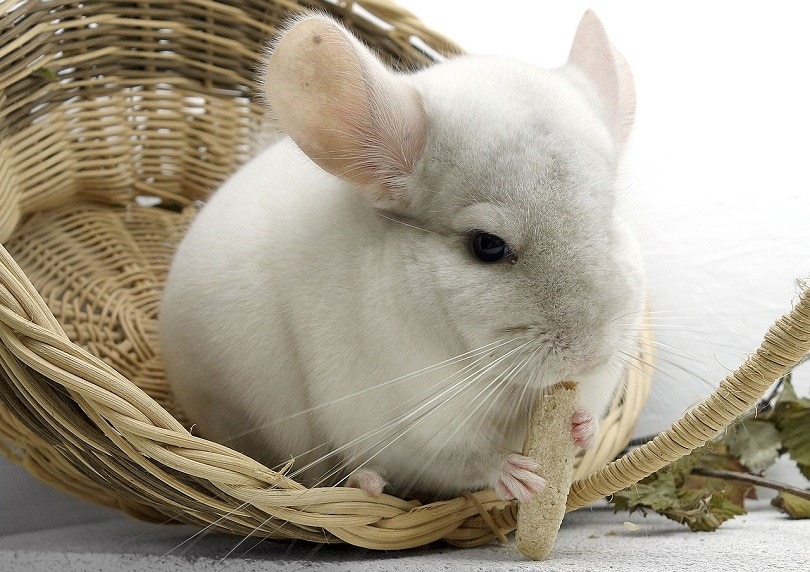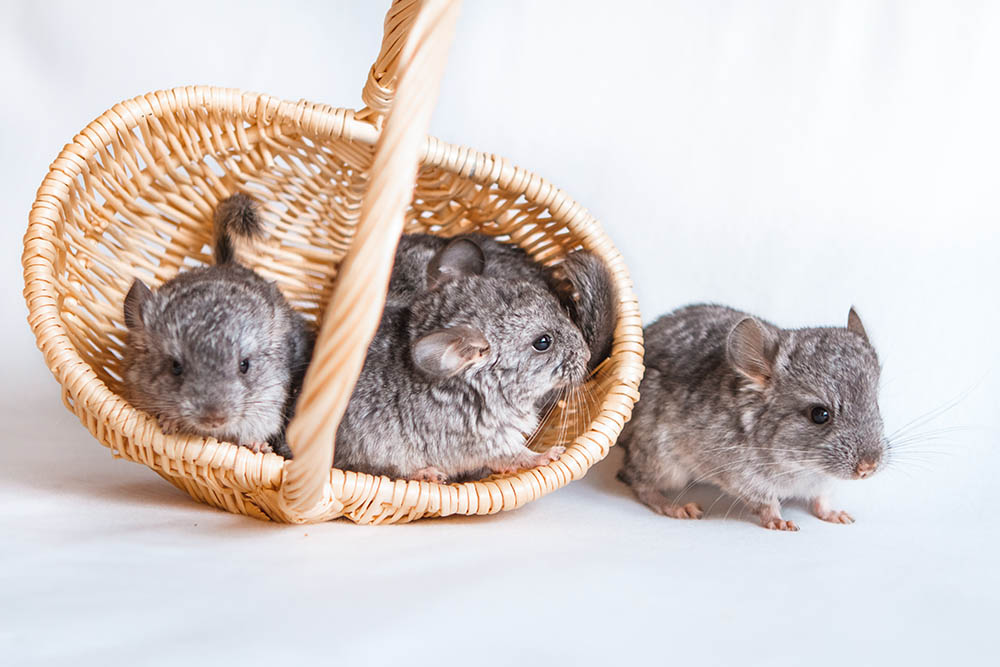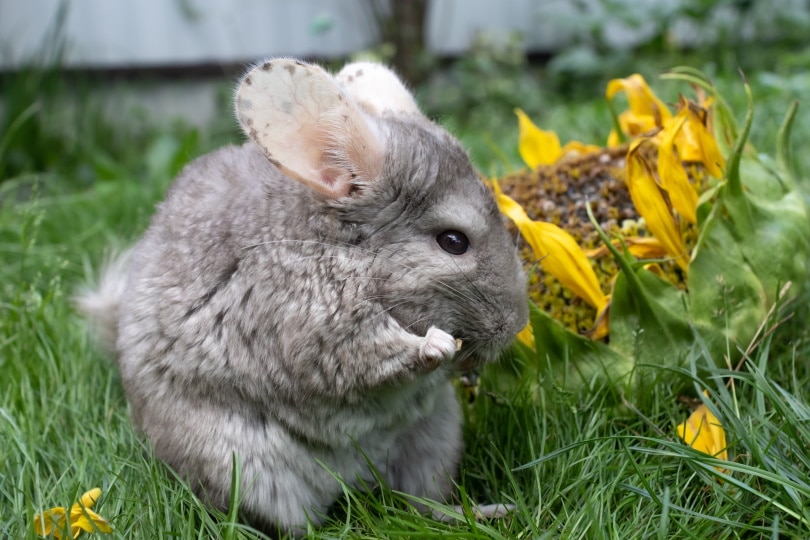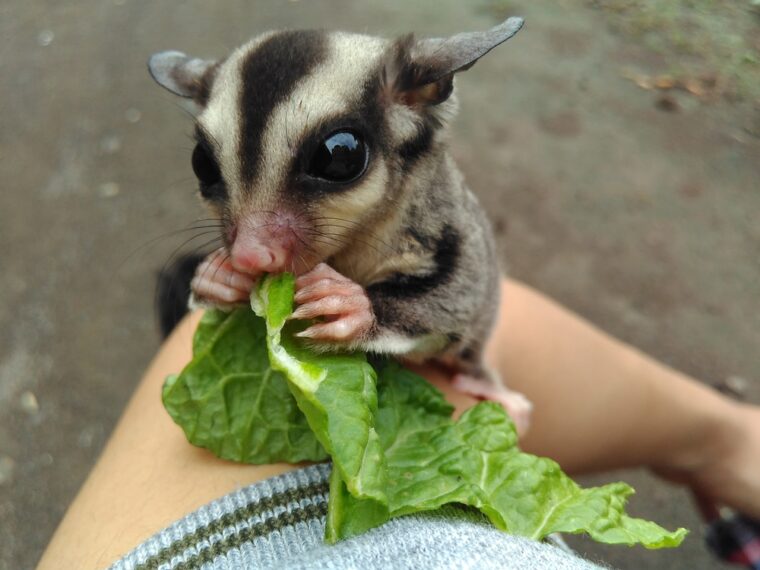
When you think of a sugar glider, you may think of a flying squirrel. They’re similar in some ways, but they’re very different animals.
Native to New Guinea and Australia, this small, adorable marsupial spends nights gliding through the trees due to a thin membrane on their sides connecting their front and back legs, called a patagium. This membrane stretches out, resembling wings, as the sugar glider jumps through the trees. It acts as a parachute, allowing them to gracefully glide through the air and giving them half their name. The other half comes from their affinity for sweet foods.
Sugar gliders have become popular pets. They’re affectionate, curious, playful, and social little creatures. However, they require a special diet. So, what do sugar gliders eat?
In the wild, sugar gliders feed on tree sap, nectar, and insects. In captivity, they require a varied diet that includes a nectar substitute, a small portion of fresh fruits and vegetables, and protein from various sources (primarily insects).

If you are in the United States, take note that it is illegal to own sugar gliders in certain states. Check with the United States Department of Agriculture’s Animal Care office in your state to find out whether the laws in your area permit ownership of sugar gliders. If you own 4 or more breeding female sugar gliders, you may be subject to the Animal Welfare Act, which may require you to obtain a license and register your pets. If you’re not in the US, check all relevant legislation before adopting or breeding sugar gliders.
In the Wild
Naturally omnivorous, the sugar glider will eat whatever they can find. Their diet usually changes with the seasons. Summer brings them plenty of insects to enjoy. In the winter, they eat acacia gum and sap from trees, nectar, and honeydew. Using their teeth to strip the bark off the trees, they then chew holes through the wood until they reach their sweet reward.
Sugar gliders don’t require much protein, and too much of it could make them sick. While their diet is complex carbohydrate-heavy, they have a large cecum (a pouch connected to their large and small intestine) that enables them to properly ferment and digest these carbs. Sugar gliders don’t pass up an opportunity for a meal in the wild and have been known to eat small birds, bird eggs, lizards, spiders, plants, wild-grown fruits and vegetables, and anything sweet.

As a Pet
If you choose to keep a sugar glider as a pet, take the time to learn about their nutritional needs to avoid making them ill. A sugar glider is usually happy to eat anything that they’re offered, but that doesn’t mean it’s good for them.
Around half of your sugar glider’s diet should be a nectar substitute. If you can’t find a brand that specifically caters to sugar gliders, consider broadening your search for lory or hummingbird nectar as replacements.
The other half of your pet’s diet should be calcium-loaded insects (with the examples mentioned above) alongside a commercial diet. Though several commercial diets and recipes for homemade diets are available, no single diet studied has yet proved to be ideal for captive sugar gliders. Therefore, you shouldn’t rely on a single diet plan or recipe to sustain your pet.
Fruits and vegetables should be offered only in moderation (<10% of total diet) because many fruits and vegetables lack essential vitamins, minerals, and protein and contain mostly water. Fruits and vegetables are also soft and high in sugar, which leads to dental issues and obesity if fed in excess.
Nectar Substitute
A nectar substitute is a non-negotiable requirement for your sugar glider. If you can’t find a nectar substitute (either one made for sugar gliders or for lories), you can substitute with the following recipe:
The recipe is rather straightforward and essentially requires that you make a mixture of all the ingredients above. It can be refrigerated for 2-3 days, but it would be best if it were made fresh daily.
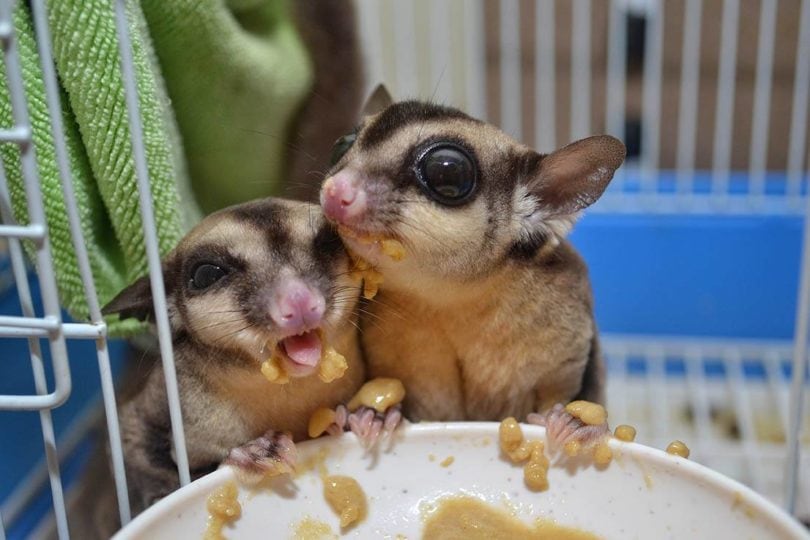

Insects
Insects offered to your pet should be calcium loaded or dusted with a calcium supplement.
Fruits and Vegetables
Fresh fruits and vegetables that are safe for your sugar glider include:
As mentioned above, fruits and vegetables shouldn’t constitute a majority of your sugar glider’s diet.

Foods to Avoid

Conclusion
Sugar gliders make fun and entertaining pets. Keep them healthy and happy with the right diet that meets their nutritional needs. Their diet shouldn’t stray too much from what they’d eat in the wild. Remember to consult your veterinarian if you’re not sure about what to feed your beloved pet.
Featured Image Credit: Az Ersad, Shutterstock

